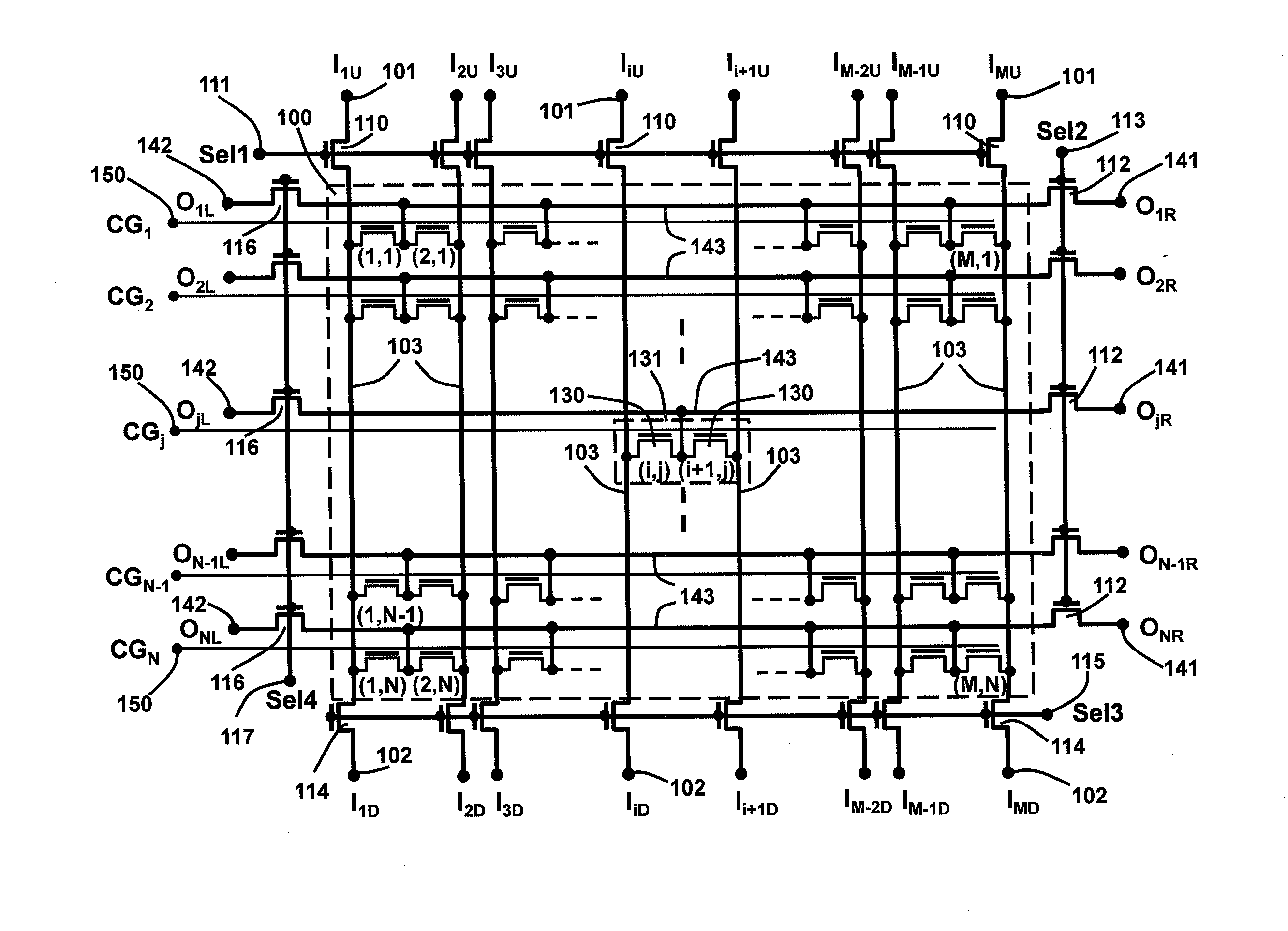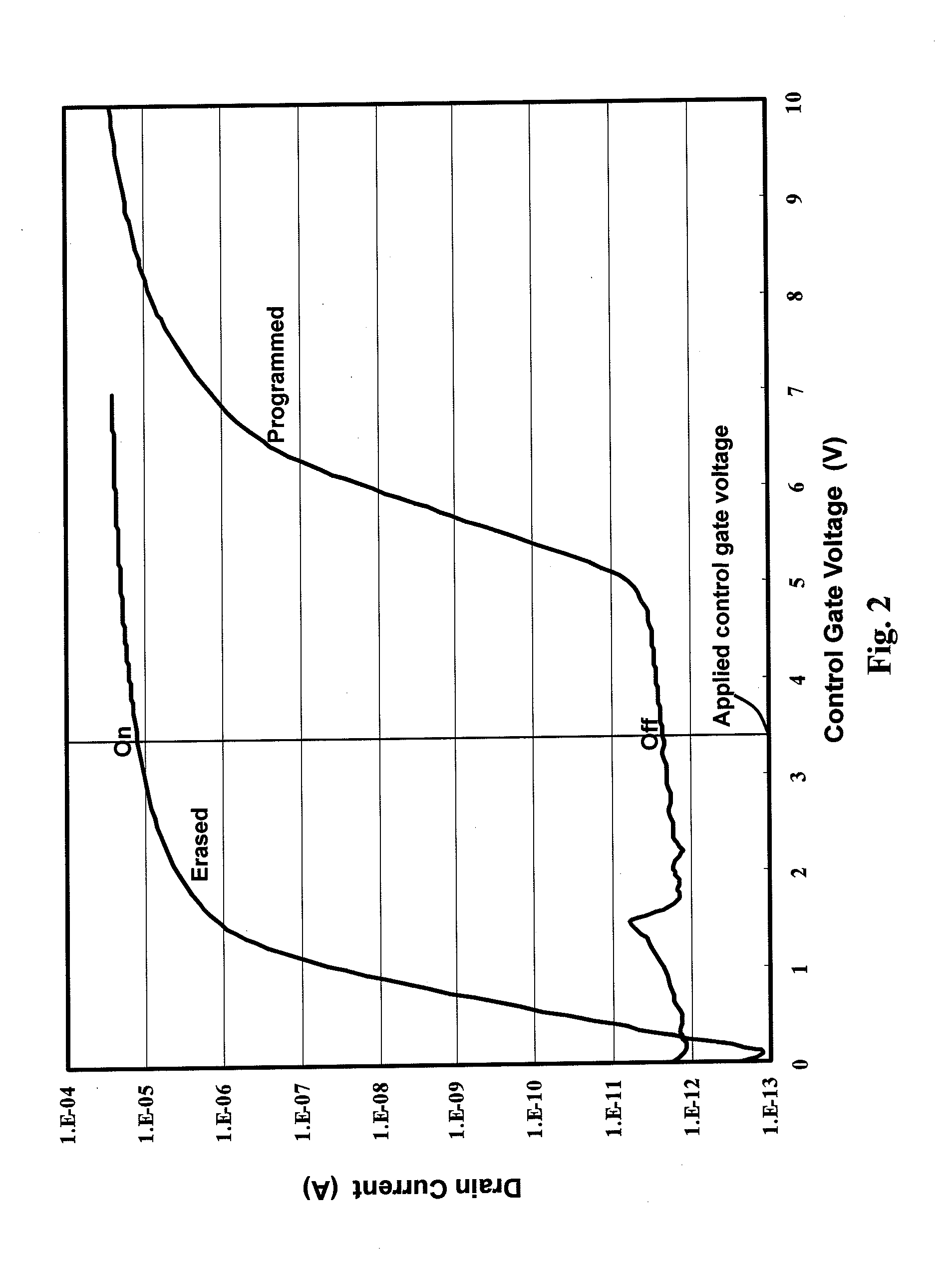Interconnection matrix using semiconductor non-volatile memory
a non-volatile memory and interconnection matrix technology, applied in the field of interconnection matrixes, can solve the problems of prolonging the development time, and reducing the quality of interconnection matrix using sglnvm
- Summary
- Abstract
- Description
- Claims
- Application Information
AI Technical Summary
Benefits of technology
Problems solved by technology
Method used
Image
Examples
Embodiment Construction
[0021]The following detailed description is meant to be illustrative only and not limiting. It is to be understood that other embodiment may be utilized and element changes may be made without departing from the scope of the present invention. Also, it is to be understood that the phraseology and terminology used herein are for the purpose of description and should not be regarded as limiting. Those of ordinary skill in the art will immediately realize that the embodiments of the present invention described herein in the context of methods and schematics are illustrative only and are not intended to be in any way limiting. Other embodiments of the present invention will readily suggest themselves to such skilled persons having the benefits of this disclosure.
[0022]In the preferred embodiment, an M×N N-type SGLNVM array 100 in NOR configuration forms the M×N interconnection matrix as the schematic shown in FIG. 1. The N-type SGLNVM cell array 100 is fabricated by standard CMOS proces...
PUM
 Login to View More
Login to View More Abstract
Description
Claims
Application Information
 Login to View More
Login to View More - R&D
- Intellectual Property
- Life Sciences
- Materials
- Tech Scout
- Unparalleled Data Quality
- Higher Quality Content
- 60% Fewer Hallucinations
Browse by: Latest US Patents, China's latest patents, Technical Efficacy Thesaurus, Application Domain, Technology Topic, Popular Technical Reports.
© 2025 PatSnap. All rights reserved.Legal|Privacy policy|Modern Slavery Act Transparency Statement|Sitemap|About US| Contact US: help@patsnap.com



